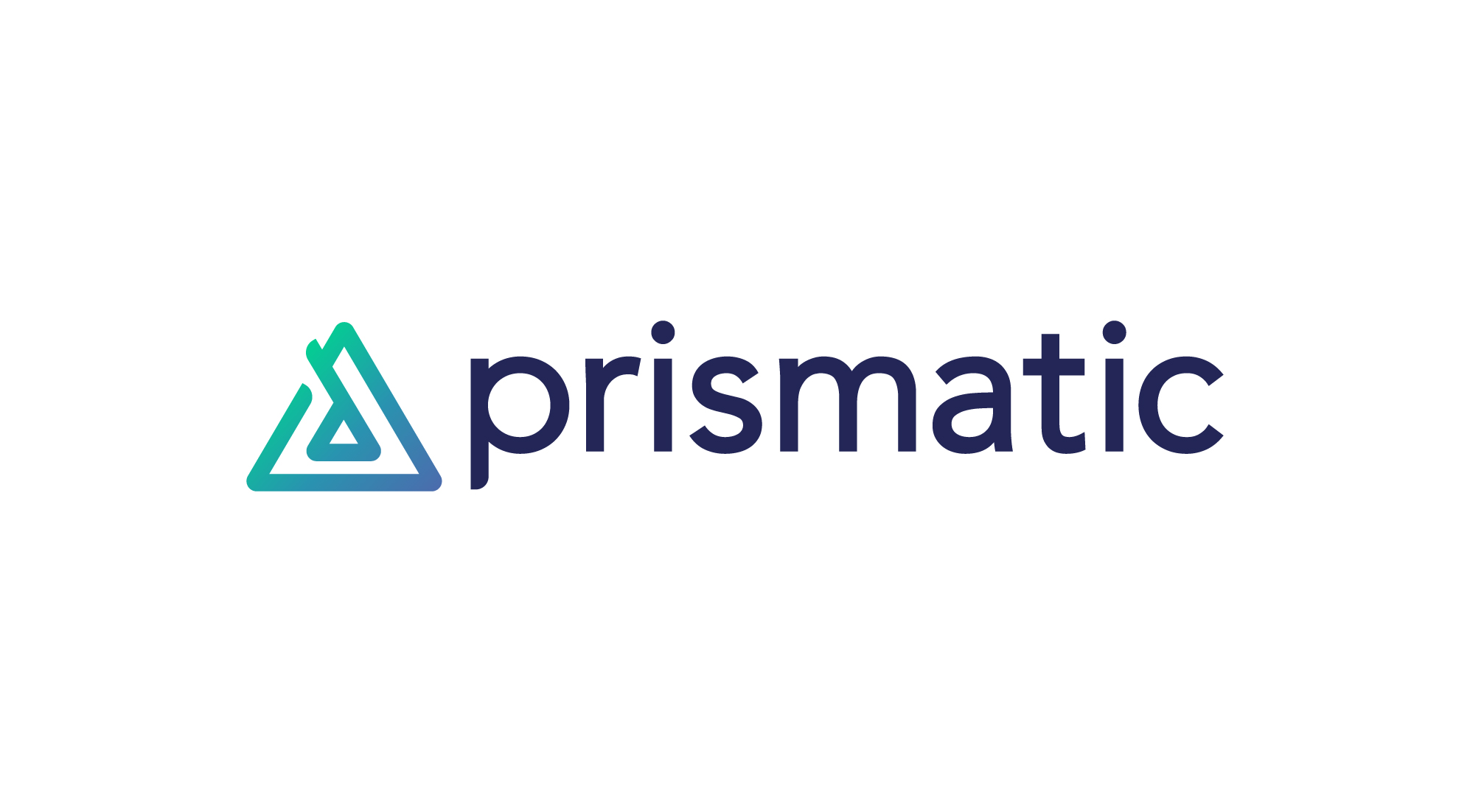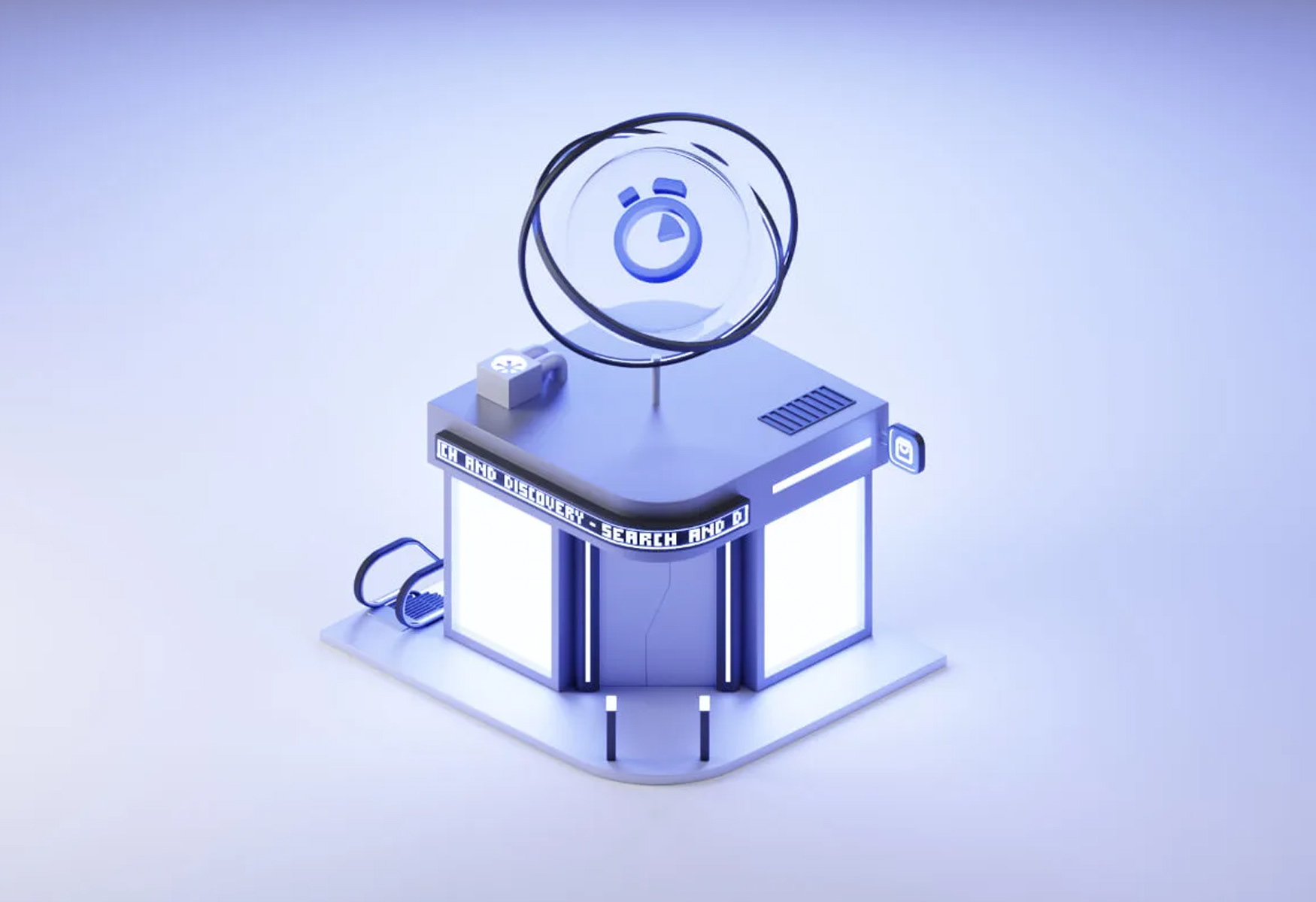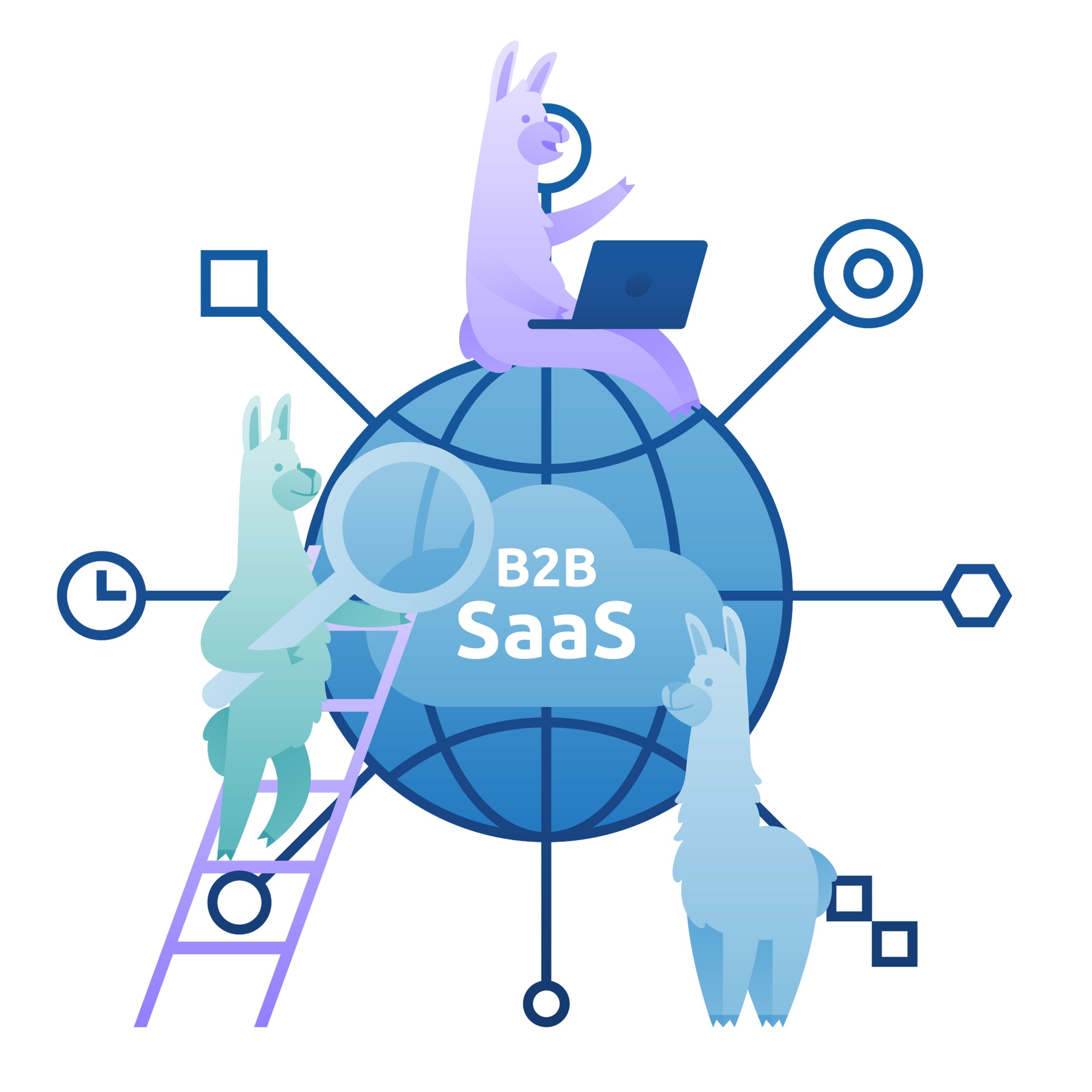Introduction
Welcome to the world of B2B SaaS, where innovation and technology converge to reshape industries and transform businesses. As a SaaS company, one of your main goals is to attract and retain customers. However, in a highly competitive market, getting your first customers can be a challenging task. This article will guide you through the process of acquiring your first customers in the B2B SaaS space.
While the path to acquiring customers may seem daunting, with the right strategies and tactics, you can pave the way for success. Whether you’re offering a project management tool, a CRM system, or a marketing automation platform, the principles outlined here can be applied to various B2B SaaS products.
Before diving into customer acquisition techniques, let’s take a moment to understand B2B SaaS. Unlike traditional software models, SaaS (Software as a Service) allows businesses to access applications and services through the internet, eliminating the need for on-premise installations. This model offers scalability, flexibility, and cost-effectiveness, making it a preferred choice for many businesses.
Understanding your target market is crucial for effective customer acquisition. Not all businesses will be interested in your product, and it’s important to focus your efforts on those who will derive the most value from it. Conduct market research to identify your target audience’s pain points, challenges, and preferences. This knowledge will enable you to tailor your marketing messages, product features, and customer acquisition strategies to resonate with your ideal customers.
Once you have a clear understanding of your target market, it’s time to build your customer acquisition strategy. This involves identifying the channels and tactics that will best reach your target audience. Consider a multi-channel approach that combines both digital and offline marketing efforts. Digital channels such as search engine optimization (SEO), content marketing, social media, and paid advertising can help you reach a wider audience and generate leads. Offline strategies like attending industry conferences, networking events, and partnering with complementary businesses can also boost your customer acquisition efforts.
As you embark on your customer acquisition journey, it’s crucial to develop a compelling value proposition. Your value proposition should clearly articulate the unique benefits and value your product delivers to customers. It’s not just about the features of your product, but how it solves your target market’s pain points and improves their business processes. Craft a compelling message that differentiates you from the competition and resonates with your customers’ needs.
In the next sections, we’ll dive deeper into specific strategies for acquiring your first customers in the B2B SaaS space. From leveraging your network for referrals and utilizing content marketing to generating buzz through strategic partnerships and leveraging social media, we’ll explore the key tactics that can help you attract and retain customers. So let’s get started on your journey to acquiring your first B2B SaaS customers.
Understanding B2B SaaS
Before diving into the strategies for acquiring customers in the B2B SaaS space, it’s essential to have a clear understanding of what B2B SaaS entails. B2B SaaS, or Business-to-Business Software as a Service, refers to the delivery of software applications and services over the internet to other businesses.
Unlike traditional software models, where physical installations and on-premise maintenance are required, B2B SaaS offers businesses the convenience of accessing software applications through the cloud. This cloud-based approach eliminates the need for expensive hardware and software installations, reduces maintenance costs, and provides greater scalability and flexibility for businesses.
One of the key advantages of B2B SaaS is the subscription-based pricing model. Instead of purchasing software outright, businesses pay a recurring subscription fee to access the software and receive ongoing updates and support. This pricing model provides businesses with predictable and scalable costs, making it more cost-effective than traditional software models.
B2B SaaS products span across a wide range of industries and functionalities. Whether it’s project management, customer relationship management (CRM), marketing automation, human resources, or communication tools, there’s a SaaS solution available for almost every business need. This market has experienced significant growth in recent years, driven by the increasing demand for cloud-based solutions and the advantages they offer.
One of the key benefits of B2B SaaS for businesses is the ability to access powerful software applications without the need for extensive IT infrastructure and technical expertise. This democratization of technology empowers businesses of all sizes to leverage advanced tools and services that were previously only accessible to large enterprises.
The B2B SaaS market is highly competitive, with numerous players vying for the attention of businesses. To succeed in this landscape, it’s crucial for SaaS companies to differentiate themselves from the competition. This can be achieved by offering unique features, exceptional user experience, excellent customer support, or targeting specific niches that are underserved by existing solutions.
Furthermore, understanding the needs and pain points of your target market is essential for developing a successful B2B SaaS product. Conduct market research, engage in customer feedback sessions, and collect data to gain insights into the challenges faced by businesses in your target industry. By addressing these pain points and providing solutions that truly add value, you can establish a competitive edge and attract customers in a crowded market.
In the next sections, we’ll explore strategies and tactics that can help you acquire your first customers in the B2B SaaS space. From identifying your target market and building a customer acquisition strategy to creating a compelling value proposition and leveraging the power of content marketing, we’ll provide actionable insights to help you succeed in acquiring your first B2B SaaS customers.
Identifying your target market
When it comes to acquiring customers in the B2B SaaS space, one of the first steps is identifying your target market. Not all businesses will be a good fit for your product, and it’s crucial to focus your efforts on those who will derive the most value from it. By identifying your target market, you can concentrate your marketing efforts and resources on the right audience.
There are several factors to consider when defining your target market. Start by understanding the industry or industries that can benefit the most from your product. Research the key players, trends, and pain points within those industries. By immersing yourself in the industry, you’ll gain valuable insights that can inform your marketing strategies.
Next, consider the company size that your product is best suited for. Are you targeting small businesses, mid-sized enterprises, or large corporations? Each segment has its own unique needs and challenges, and understanding which segment aligns with your product is crucial for effective targeting.
Demographics also play a vital role in identifying your target market. Consider factors such as location, company culture, and job roles within the organizations you’re targeting. By understanding the demographic makeup of your target market, you can tailor your marketing messages and channels to resonate with your audience.
Furthermore, it’s important to consider the psychographics of your target market. Psychographics refer to the attitudes, behaviors, and motivations of your customers. What are their pain points? What are their goals and aspirations? By understanding the psychographics of your target market, you can develop marketing messages that deeply resonate with your audience.
Once you have a clear understanding of your target market, it’s important to validate your assumptions through market research. Conduct surveys, interviews, and track industry trends to gather insights directly from your potential customers. This data will help you refine your target market, understand their preferences, and develop effective marketing strategies.
Remember that identifying your target market is an ongoing process. As your business grows and evolves, so too may your target market. Stay agile and open to refining your target market based on new insights and feedback you receive from customers.
In the next sections, we’ll explore strategies for building your customer acquisition strategy, developing a compelling value proposition, and leveraging various channels to attract your first B2B SaaS customers. By understanding your target market and tailoring your efforts to their needs, you’ll be well-equipped to acquire customers in the B2B SaaS space.
Building your customer acquisition strategy
Now that you have identified your target market, it’s time to build a robust customer acquisition strategy to reach and attract your ideal customers. A well-defined customer acquisition strategy will help you allocate resources effectively, maximize your marketing efforts, and ultimately drive growth for your B2B SaaS business.
The first step in building your customer acquisition strategy is to determine the channels and tactics that will best reach your target audience. Consider a multi-channel approach that combines both digital and offline marketing efforts. Digital channels such as search engine optimization (SEO), content marketing, social media, and paid advertising can help you reach a wider audience and generate leads. Offline strategies like attending industry conferences, networking events, and partnering with complementary businesses can also boost your customer acquisition efforts.
When choosing your channels, consider the preferences and behaviors of your target audience. Where do they spend their time online? Which social media platforms do they frequent? By understanding where your target audience is most active, you can allocate resources to the channels that will yield the highest return on investment (ROI).
In addition to selecting the right channels, it’s crucial to create compelling marketing messages and content that resonate with your target audience. Craft a clear and concise value proposition that highlights the unique benefits and value your product offers. Tailor your messaging to address the pain points and challenges faced by your target market, positioning your product as the ideal solution.
As you build your customer acquisition strategy, consider leveraging content marketing to attract leads and establish thought leadership in your industry. Create high-quality blog posts, white papers, case studies, and videos that provide value to your target audience. By offering valuable content, you can position your brand as an authority and build trust with potential customers.
Referrals can be a powerful tool in customer acquisition, particularly in the B2B space. Utilize your professional network to ask for referrals from satisfied clients, industry colleagues, and partners. Additionally, consider implementing a referral program that incentivizes existing customers to refer your product to others. This can help you tap into their network and acquire customers who are more likely to trust your product based on a trusted recommendation.
Tracking and analyzing your customer acquisition metrics is essential for optimizing your strategy and making data-driven decisions. Keep a close eye on metrics such as conversion rates, cost per acquisition (CPA), customer lifetime value (CLV), and return on investment (ROI) for each marketing channel. This will help you identify which channels are most effective and allocate resources accordingly.
In the next sections, we’ll explore how to develop a compelling value proposition, create a minimum viable product (MVP), and leverage strategic partnerships for customer acquisition. By building a solid customer acquisition strategy that aligns with your target market and business goals, you’ll be well-equipped to attract your first customers in the B2B SaaS space.
Developing a compelling value proposition
In the competitive world of B2B SaaS, having a compelling value proposition is essential to stand out from the crowd and attract customers. Your value proposition is a concise statement that communicates the unique benefits and value your product offers to your target market. It’s not just about the features of your product; it’s about how it solves your target market’s pain points and improves their business processes.
When developing your value proposition, start by understanding the specific pain points and challenges faced by your target audience. Conduct market research, engage in customer feedback sessions, and collect data to gain insights into their needs and desires. By understanding their pain points, you can position your product as the solution that addresses those pain points and provides tangible benefits.
One way to structure your value proposition is by using a simple formula:
Start with a clear statement of the problem your target market faces. Identify their pain point and highlight the negative impact it has on their business.
Next, introduce your product as the solution to their problem. Highlight the specific benefits and advantages your product offers in addressing their pain points.
Finally, emphasize the unique selling points that differentiate your product from competitors. What sets your product apart? It could be a specific feature, a more user-friendly interface, or exceptional customer support.
Remember to keep your value proposition concise and easy to understand. It should be clear, compelling, and resonate with your target audience. Avoid using technical jargon or industry-specific terms that may confuse or alienate potential customers.
In addition to crafting a compelling value proposition, it’s important to consistently communicate and reinforce it throughout your marketing channels. Ensure your website, landing pages, social media profiles, and marketing materials all convey a consistent message that highlights the unique value your product offers.
Customer testimonials and case studies can also be powerful tools in communicating your value proposition. Share success stories of how your product has positively impacted businesses and solved their pain points. This social proof adds credibility and helps potential customers envision how your product can benefit them.
As you develop and refine your value proposition, don’t be afraid to iterate and make adjustments based on customer feedback and market trends. Stay attuned to the evolving needs of your target market and adapt your value proposition accordingly. This ongoing process of refinement will ensure that your value proposition remains relevant and compelling.
In the next sections, we’ll explore how to create a minimum viable product (MVP) and leverage strategic partnerships for customer acquisition. By developing a compelling value proposition and showcasing it effectively, you’ll be well-positioned to attract your first customers in the B2B SaaS space.
Creating a minimum viable product (MVP)
When building a B2B SaaS product, creating a minimum viable product (MVP) is a crucial step in the development process. An MVP is the most basic version of your product that includes the core features and functionalities needed to solve your target market’s pain points.
The key concept behind an MVP is to launch your product quickly with the minimum set of features necessary to attract early customers and validate your assumptions. This approach allows you to gather feedback, iterate, and refine your product based on real-world usage and customer insights.
Before developing your MVP, it’s important to have a clear understanding of your target market and their specific needs. Identify the key pain points and challenges your target audience faces and prioritize the features that directly address those pain points. By focusing on solving core problems, you can ensure your MVP provides immediate value to early customers.
Keep in mind that an MVP does not mean compromising on quality. It should still be well-designed and provide a positive user experience. While it may not have all the bells and whistles of a fully-featured product, it should be functional, stable, and deliver on its promise.
When developing your MVP, consider the following guidelines:
- Start with the core features: Identify the essential functionalities that solve your target market’s pain points. These features should be the foundation of your MVP and directly align with your value proposition.
- Keep it simple: Avoid overloading your MVP with unnecessary features. Focus on simplicity and ease of use to ensure a smooth user experience.
- Iterate and improve: Launching an MVP is just the beginning. Gather feedback from early customers, track their usage patterns, and listen to their suggestions. Use this feedback to continuously iterate and improve your product, adding new features based on customer needs.
- Engage with early adopters: Actively engage with your early adopters to build a feedback loop and foster a sense of community. Provide channels for them to share their feedback, submit feature requests, and report any issues they encounter.
Launching an MVP allows you to validate your product-market fit and gather valuable insights that will inform your future product roadmap. It also gives you the opportunity to generate early buzz and attract investors or potential partners who can help accelerate your growth.
Remember that an MVP is not a one-time release; it’s an iterative process. Continuously gather feedback, learn from your users, and adapt your product based on their needs. By focusing on delivering value to your customers and continuously improving your offering, you’ll be on the path to success in the B2B SaaS space.
In the next sections, we’ll explore strategies for leveraging your network for referrals, utilizing content marketing, and generating buzz through strategic partnerships. By implementing these tactics alongside your MVP, you’ll be well-equipped to acquire your first customers in the B2B SaaS space.
Leveraging your network for referrals
When it comes to acquiring customers in the B2B SaaS space, one of the most effective and cost-efficient strategies is leveraging your network for referrals. Referrals can be a powerful tool in attracting new customers, as they come with a built-in level of trust and credibility.
Start by tapping into your existing network of contacts, including clients, colleagues, industry peers, and friends. Reach out to them and let them know about your B2B SaaS product. Explain the unique value it offers and how it can solve the pain points of their businesses or those of their connections.
When asking for referrals, be specific about the type of customers you’re looking to acquire. This will help your network better understand who would be a good fit for your product and increase the chances of receiving quality referrals. Provide clear guidelines about the industries, company sizes, or job roles that align with your target market.
Offering incentives can be a great way to motivate your network to refer your product. This can be in the form of discounts, commission-based referral programs, or other rewards for successful referrals. Make sure to communicate these incentives clearly to your network to encourage their active participation.
Another way to leverage your network for referrals is through customer testimonials and case studies. Reach out to satisfied customers and ask if they would be willing to provide a testimonial or participate in a case study. These testimonials and case studies can be powerful social proof that adds credibility to your product and encourages referrals.
To amplify your network’s potential for referrals, consider engaging in industry events, conferences, and networking groups. Attend relevant industry conferences and networking events to connect with potential customers and build relationships with influencers in your industry. These connections can lead to valuable referrals and partnerships that can fuel your customer acquisition efforts.
When leveraging your network for referrals, it’s important to maintain a strong relationship with your contacts. Keep them updated about new features, product updates, and success stories. Engage with them through newsletters, industry insights, and personalized communication to nurture the relationship and keep your product top of mind.
Remember, word of mouth is a powerful marketing tool, especially in the B2B space. By leveraging your network for referrals, you tap into the trust and credibility that comes with personal recommendations. So don’t hesitate to reach out to your network, ask for referrals, and provide incentives to encourage them to spread the word about your B2B SaaS product.
In the next sections, we’ll explore the power of content marketing in attracting leads, generating buzz through strategic partnerships, and implementing a customer feedback loop. By combining these strategies with referrals from your network, you’ll be well-equipped to acquire your first customers in the B2B SaaS space.
Utilizing content marketing to attract leads
In the digital age, content marketing has become a powerful tool for acquiring customers in the B2B SaaS space. By creating and sharing valuable, informative, and engaging content, you can attract leads, build brand awareness, and establish thought leadership in your industry.
One of the first steps in utilizing content marketing effectively is to understand your target audience and their pain points. What are the challenges and problems they face in their businesses? What kind of information and insights are they seeking? By understanding their needs, you can create content that resonates with them and provides solutions.
Create a content strategy that aligns with your target audience’s needs and your business goals. Determine the topics you want to cover and establish a consistent schedule for producing and publishing content. This can include blog posts, white papers, case studies, e-books, infographics, videos, and more.
When developing content, focus on providing value to your audience. Offer insights, tips, best practices, and actionable advice that can help them overcome challenges and improve their business processes. By positioning yourself as a trusted resource, you can build credibility and establish a loyal following.
Optimize your content for search engines by incorporating relevant keywords and utilizing best practices for on-page SEO. This will help your content rank higher in search engine results and attract organic traffic to your website. Conduct keyword research to identify the terms and phrases your target audience is searching for, and incorporate them naturally throughout your content.
Engage your audience through various channels, such as email newsletters, social media, and industry forums. Distribute your content through these channels to reach a wider audience and encourage engagement and sharing. Encourage your audience to leave comments, ask questions, and share their thoughts on your content, fostering a sense of community and interaction.
To attract leads through your content, incorporate lead capture mechanisms such as gated content, where users must provide their contact information in exchange for access to premium content. This allows you to build a database of leads who have shown interest in your content and are more likely to convert into customers.
Track and analyze the performance of your content through metrics such as page views, engagement rates, and conversion rates. This data will help you understand which types of content are resonating with your audience and drive the highest ROI.
Remember, the key to successful content marketing is consistency, quality, and relevance. Keep producing valuable content that addresses your audience’s pain points and positions your brand as an authority in your industry. By utilizing content marketing effectively, you can attract leads, build brand awareness, and ultimately acquire customers in the B2B SaaS space.
In the next sections, we’ll explore strategies for generating buzz through strategic partnerships, implementing a customer feedback loop, leveraging social media for customer acquisition, and tracking and analyzing customer acquisition metrics. By combining these strategies with content marketing, you’ll have a comprehensive approach to acquiring your first customers in the B2B SaaS space.
Generating buzz through strategic partnerships
When it comes to acquiring customers in the B2B SaaS space, strategic partnerships can be a powerful way to generate buzz and expand your reach. By collaborating with complementary businesses and industry influencers, you can tap into their existing audience and leverage their credibility to attract new customers.
Start by identifying potential partners that align with your target market and share a similar customer base. Look for businesses that offer complementary products or services, but are not direct competitors. These partnerships can create a win-win situation, where both parties benefit from the collaboration.
When approaching potential partners, highlight how your product can enhance their offering and provide additional value to their customers. Emphasize the mutual benefit of the partnership and how it can help both businesses reach new audiences and increase customer acquisition.
Collaborate on joint marketing initiatives such as co-branded content, webinars, events, or product integration. These initiatives can help generate buzz and increase brand visibility for both parties. Collaborating on content, for example, allows you to tap into each other’s audience and share valuable insights and expertise.
Consider hosting webinars or joint events where you can showcase your expertise and provide value to your target audience. By leveraging your partner’s audience and network, you can attract new leads and build brand recognition. These events also provide an opportunity for cross-promotion, increasing the visibility of both businesses.
Seek out industry influencers who can amplify your reach and credibility. Collaborate with them to create content, participate in interviews, or co-host events. Influencers have a loyal following and their endorsement of your product can help generate buzz and attract new customers.
Track and measure the success of your strategic partnerships through metrics such as lead generation, conversions, and reach. Monitor how each partnership is performing and make data-driven decisions on which collaborations to pursue or expand.
Networking is also a key component of strategic partnerships. Attend industry conferences and events to connect with potential partners and build relationships. Join industry-specific associations or organizations where you can meet like-minded businesses and explore partnership opportunities.
Remember that strategic partnerships require ongoing nurturing and collaboration. Maintain regular communication with your partners, provide support and resources, and look for ways to continually add value to the relationship. Strong partnerships can lead to long-term business growth and customer acquisition opportunities.
In the next sections, we’ll explore implementing a customer feedback loop, leveraging social media for customer acquisition, and tracking and analyzing customer acquisition metrics. By combining these strategies with strategic partnerships, you’ll have a comprehensive approach to acquiring your first customers in the B2B SaaS space.
Implementing a customer feedback loop
Listening to and acting upon customer feedback is a critical aspect of acquiring and retaining customers in the B2B SaaS space. Implementing a customer feedback loop allows you to understand your customers’ needs, address their pain points, and continuously improve your product and services.
Start by setting up channels for customers to provide feedback. This can include email surveys, in-app feedback forms, live chat support, or customer support ticketing systems. Make it easy and convenient for customers to share their thoughts and concerns.
Actively listen to your customers and read their feedback to gain insights into their experiences and challenges. Take the time to understand their pain points, suggestions, and desired improvements. This feedback is invaluable in shaping the direction of your product and aligning it with your customers’ needs.
Organize and categorize customer feedback. Look for patterns and common themes that emerge from the feedback received. Identify the most critical issues and prioritize them for resolution. This information helps you understand the areas where improvements are most needed.
Regularly communicate with your customers to keep them informed about the actions you are taking based on their feedback. This demonstrates that you value their input and are committed to addressing their concerns. Open and transparent communication builds trust and strengthens customer relationships.
Implement a process to address and resolve customer issues in a timely manner. Assign responsibilities to the appropriate team members to ensure that feedback is acknowledged, investigated, and resolved effectively. Keep customers updated on the progress of issue resolution and provide clear timelines where possible.
Consider implementing a customer feedback management system to streamline the process and ensure that no feedback slips through the cracks. This system can help you track and monitor customer feedback, assign tasks, and provide real-time visibility into the status of customer issues or suggestions.
Act on the feedback received by making improvements to your product, user experience, or customer support processes. Continuously iterate and release updates based on customer feedback to show that you are committed to their success and satisfaction.
Show appreciation for your customers’ feedback by providing incentives or rewards for their participation in surveys or providing testimonials. This gesture encourages engagement and fosters a sense of partnership between your business and your customers.
Regularly review and analyze customer feedback metrics to gain insights into customer satisfaction levels, identify trends, and monitor your progress in addressing customer concerns. Use this data to drive continuous improvement and make informed decisions about product enhancements and customer support initiatives.
By implementing a customer feedback loop, you demonstrate to your customers that you value their opinions and are committed to meeting their needs. This process of actively listening, acting, and iterating based on customer feedback will not only help you acquire new customers but also foster customer loyalty and retention.
In the next section, we’ll explore leveraging social media for customer acquisition. By combining the strategies discussed so far with social media tactics, you’ll have a comprehensive approach to acquiring your first customers in the B2B SaaS space.
Leveraging social media for customer acquisition
Social media has become a powerful platform for B2B SaaS companies to acquire customers and build brand awareness. By leveraging the reach and engagement of social media platforms, you can connect with your target audience, establish thought leadership, and drive leads to your business.
Start by identifying the social media platforms that align with your target audience and industry. LinkedIn is a popular platform for B2B professionals, while Twitter and Facebook can also be effective channels for reaching a wider audience. Understand where your target audience spends their time and focus your efforts on those platforms.
Create a social media strategy that aligns with your business goals and target market. Set clear objectives for your social media presence, whether it’s to drive website traffic, generate leads, or build brand awareness. Develop a content calendar that outlines the types of content you will share and the frequency of your postings.
Engage with your audience by sharing valuable and relevant content. Create original content such as blog posts, articles, infographics, and videos that provide insights and solutions to the pain points of your target audience. Share industry news and trends, offer tips and best practices, and promote thought leadership content.
Encourage engagement and interactions with your posts by asking questions, seeking opinions, and responding to comments and messages in a timely manner. Engaging with your audience on social media helps foster relationships, build trust, and increase brand loyalty.
Use social media advertising to expand your reach and target specific segments of your audience. Platforms like Facebook, LinkedIn, and Twitter offer robust advertising tools that allow you to reach a highly targeted audience based on demographics, interests, and behavior. Develop eye-catching ads with compelling call-to-action messages to drive traffic to your website or landing pages.
Incorporate visual elements into your social media strategy. Use high-quality images and videos to capture attention and convey your brand message. Leverage the power of storytelling through visual content to engage and inspire your audience.
Cross-promote your social media channels across your marketing channels and website. Include social media icons and links on your website, email signatures, and other marketing materials. This encourages your audience to connect and engage with you on social media, expanding your reach and potential customer base.
Monitor and analyze social media metrics such as reach, engagement, click-through rates, and conversions. This data provides valuable insights into the effectiveness of your social media efforts and helps you identify areas for improvement. Use tracking tools and analytics to measure the impact of your social media activities on lead generation and customer acquisition.
Stay up-to-date with social media trends and changes in algorithms to ensure your strategy remains effective. Social media platforms are constantly evolving, and staying ahead of the curve allows you to adapt and optimize your social media approach.
By leveraging social media effectively, you can tap into the vast networks and engaged audience on these platforms to acquire customers and build a strong brand presence. In the next section, we’ll explore tracking and analyzing customer acquisition metrics, providing you with the tools to measure and optimize your customer acquisition efforts.
Tracking and analyzing customer acquisition metrics
Tracking and analyzing customer acquisition metrics is vital for evaluating the success of your B2B SaaS customer acquisition efforts. By measuring key metrics, you can gain valuable insights into the effectiveness of your marketing strategies, identify areas for improvement, and make data-driven decisions to optimize your customer acquisition efforts.
One important metric to track is conversion rate. This metric measures the percentage of website visitors or leads that convert into paying customers. By tracking your conversion rate, you can assess the performance of your marketing channels and landing pages and make adjustments to improve conversion rates.
Cost per acquisition (CPA) is another critical metric to monitor. It calculates the cost incurred to acquire a single customer. By tracking CPA, you can evaluate the effectiveness of your marketing campaigns and channels and ensure that your customer acquisition efforts are cost-efficient and profitable.
Customer lifetime value (CLV) is an essential metric that estimates the total revenue a customer will generate throughout their relationship with your business. Tracking CLV helps you understand the long-term value of acquiring a new customer and the potential return on investment for your customer acquisition efforts.
Monitor customer acquisition by channel to identify the most effective marketing channels that generate the highest number of quality leads and conversions. Analyzing channel-specific metrics such as click-through rates, engagement rates, and conversion rates can help you allocate resources and focus your efforts on the channels that yield the best results.
Retention rate is another important metric to track in customer acquisition. It measures the percentage of customers who continue to use your product over time. A high retention rate indicates that your customer acquisition and onboarding strategies are effective, while a low retention rate may indicate issues that need to be addressed.
Track and analyze customer acquisition costs by channel to evaluate the ROI of your marketing efforts. Calculate the cost of acquiring customers through different channels and compare it against the revenue generated from those customers to determine which channels are most profitable.
Utilize customer surveys and feedback to gather qualitative data about customer satisfaction, pain points, and reasons for choosing your product. Analyze this feedback to understand how well your acquisition strategies align with your customers’ needs and expectations, and make adjustments as necessary.
Regularly review and analyze customer acquisition metrics to identify trends, monitor progress, and make data-driven decisions. Consider using analytics tools and dashboards to streamline data collection and visualization, making it easier to track and analyze metrics in real-time.
Keep in mind that customer acquisition metrics are not static, and it’s important to monitor them regularly to identify changes and trends over time. Continually refine your customer acquisition strategies based on the insights gained from tracking and analyzing these metrics.
By tracking and analyzing customer acquisition metrics, you can gain valuable insights into the effectiveness of your strategies and optimize your efforts to acquire new B2B SaaS customers effectively. With a data-driven approach, you can make informed decisions, improve ROI, and drive sustainable growth for your business.
Now that we’ve explored the strategies and metrics for acquiring customers in the B2B SaaS space, consider implementing these tactics alongside your SEO efforts to increase visibility and attract your first customers.
Conclusion
Acquiring customers in the B2B SaaS space requires a strategic and multifaceted approach. By implementing the strategies and tactics outlined in this article, you can increase your chances of attracting your first customers and driving growth for your business.
Understanding B2B SaaS and identifying your target market lay the foundation for effective customer acquisition. By conducting thorough market research and developing a compelling value proposition, you can tailor your marketing messages and outreach efforts to resonate with your ideal customers.
Building a customer acquisition strategy involves selecting the right channels, leveraging strategic partnerships, and utilizing content marketing to attract leads. By tapping into your network for referrals and implementing a customer feedback loop, you can generate buzz and continuously improve your product and customer experience.
Social media platforms offer immense opportunities for customer acquisition. By leveraging their reach and engagement, you can expand your brand’s visibility, engage with your target audience, and drive leads to your business.
Tracking and analyzing customer acquisition metrics is crucial for monitoring the effectiveness of your efforts. By monitoring metrics like conversion rate, cost per acquisition, customer lifetime value, and retention rate, you can make data-driven decisions and optimize your strategies to drive sustainable growth.
In conclusion, acquiring your first customers in the B2B SaaS space requires a combination of strategic planning, effective messaging, utilizing various marketing channels, forming beneficial partnerships, and continuously refining your approach based on customer feedback and data-driven insights. By implementing these strategies, consistently providing value to your target audience, and adapting to evolving market trends, you’ll be well-equipped to acquire your first customers and pave the way for long-term success in the B2B SaaS industry.

























